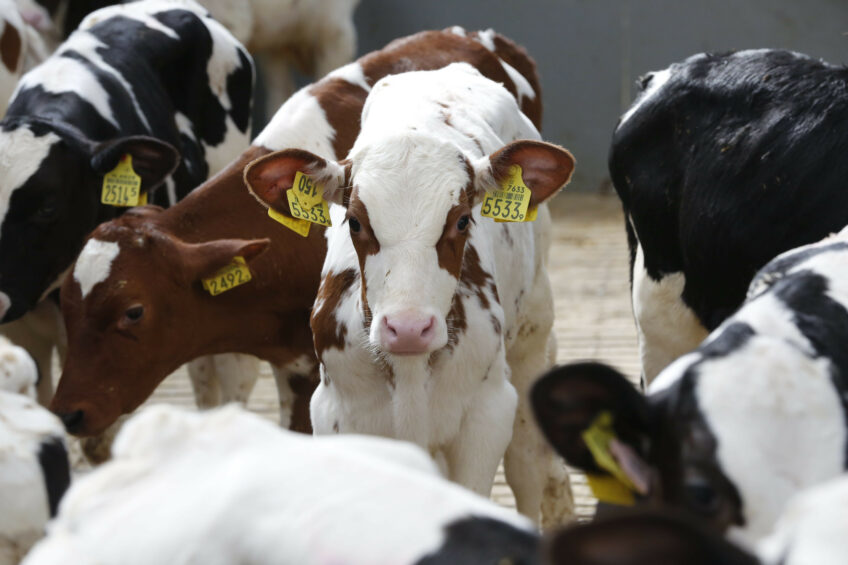Smarter ways to raise your calves

What if tweaking your management system could positively impact your bottom line? One veterinarian thinks it can.
Siert-Jan Boersema, a veterinarian at Jongveecoach, is a strong believer that rearing young stock smarter helps cows reach their true genetic potential. Boersema was a Proagrica Future Farming Theatre guest speaker at the Global Forum for Innovations in Agriculture (GFIA) in Utrecht in May.

Calf rearing is combination of elements
The aim of every dairy farmer is to raise a heifer that sees the maximum expression of her genetic potential within 24 months, Boersema said in the opening of his talk. There’s no one magic solution to do this; rather, it’s a combination of elements – gut maturation, colostrum intake and gradual weaning – that leads to stronger overall performance. “We all know that youngster rearing is an investment in the future,” he said. “It’s 2 years of making costs, and 2½ lactations before a heifer earns money for the farmer. This is really something we should keep in mind.”
At the same time, not much has changed on the farm in the past few generations. Older farmers know that calves should be fed carefully to promote steady and strong growth. They also know what is needed nutritionally to support that growth. For some reason, though, calf mortality is still on the rise. “How is it possible that we know so much and still more calves are dying?” Boersema asked. “Is it technology, knowledge or something else? We think it’s both, but also looking to what’s really important.”

Importance of dry cow feeding
Boersema also discussed epigenetics, the study of the ways in which expressed heritable traits are modified by the environment around them or other outside influences. He referred to epigenetics as the switching on or off of gene expression to provide everlasting change in the performance of a calf or heifer. Some of this ‘switching on’ and ‘switching off’ happens during pregnancy, he said, including circumstances that influence future fertility, calf size and gut maturation. “We know if we don’t feed cows well in the last 2 months of pregnancy that the development of the gut is not right, and this in turn can lead to problems with diarrhea in calves.” Another example; IgG [immunoglobulin G] is not taken up in cows that are fed low protein during the dry period. Boersema: “At least 14% raw protein improves the immune status of the calf. It all has to do with gut maturation.”
Long-term effects of colostrum
Colostrum intake is extremely important to the growth and development of a newborn calf. It supplies energy and assists in the development of the immune system. It contains proteins that are not found in cows’ milk, as well as insulin, which is needed during the first 4 days of life to assist in the update of glucose.
Research shows that the first feeding of colostrum has a tremendous effect on later life. After birth we have 3 or 6 months of growth to really capitalise on genetic expression and colostrum plays a big part in this. Calves that receive 4 liters of colostrum at first feeding – within 2 hours of birth – see an improvement in growth rate. Furthermore, age to first insemination decreases, and survival into second lactation improves. Finally, the sum of first and second lactation yields also increases. During the milk period at the end of the pre-puberal phase, Boersema said farmers have the ability to accelerate growth up to 1 kg/day. As a result, milk production can be increased by as much as 1,500kg during the first lactation, he said. “If you feed a calf well and it grows well, then it will give good milk,” he said.

Early growth is most efficient
The last point of Boersema’s talk was on gradual weaning. “In the dairy industry we always say that 2 times birth weight is weaning weight,” he said. “I’ve never found any literature that proves that that’s the best way.” Boersema said farmers tend to forget that feed efficiency is at its highest during the rearing period. Yes, milk is expensive, but the calves also grow the fastest on 1 kilogram of milk or dry matter of milk. “When you make the calculation, early growth is most efficient. I also think that when you feed poor quality feed that it’s expensive feeding.” Researchers have noted that the moment the cow comes into heat is dependent on overall weight. The calf that gains the most weight during the rearing period will come into heat first. A 200-gram per day weight gain difference can end up costing the farmer €200, said Boersema. Put another way, the farmer whose calves reach the insemination moment 2 months earlier can earn an additional €200 per calf just by improving management. “I think that management decisions now and in the future should be more based on growth and growth data,” Boersema concluded. “We could discuss all kinds of technology and really smart dairy farming, but if you’re not able to improve the on-farm circumstances on a daily basis, well, it really has a major influence on the first part.”
Join 13,000+ subscribers
Subscribe to our newsletter to stay updated about all the need-to-know content in the dairy sector, two times a week.










